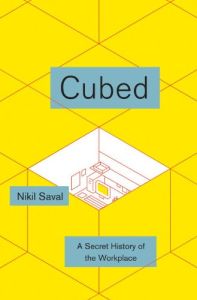Join getAbstract to access the summary!

Join getAbstract to access the summary!
Nikil Saval
Cubed
A Secret History of the Workplace
Doubleday Broadway, 2014
What's inside?
How did the office come to be and where is it going?
Recommendation
The Industrial Revolution helped give rise to the office – where people today push paper, thump keyboards, play politics and earn not-always-equal amounts of money. The increasing popularity of telecommuting and contract work puts the office on the verge of enormous change. Journalist Nikil Saval walks you through the evolution of today’s white-collar world. He deftly cites Herman Melville’s 1853 short story Bartleby, the Scrivener: A Story of Wall Street and the 1999 film Office Space, while providing a short, fascinating course on architecture and its effects on people’s work and their emotions. getAbstract recommends Saval’s eye-opening essay to anybody who works in an office and wonders what’s to come.
Summary
About the Author
Nikil Saval is a writer, journalist and editor for the digital/print magazine n+1.


















Comment on this summary